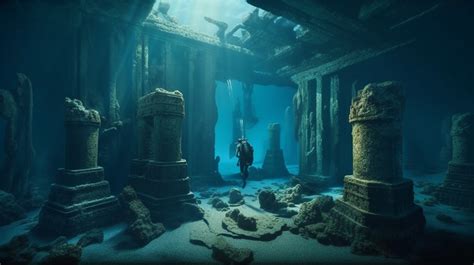
A potential mega-tsunami triggered by a volcanic eruption in the Cape Verde Islands could send a 1,000-foot wave crashing into coastlines as far away as the Americas, scientists warn, potentially devastating coastal communities in the path of such a massive wave. The warning stems from a study published in the journal Science Advances focusing on past landslides and potential future events at the Fogo volcano.
A cataclysmic flank collapse of the Fogo volcano in Cape Verde could unleash a mega-tsunami, sending a wall of water hundreds of feet high across the Atlantic, potentially devastating coastal regions across the Atlantic, according to a study published in Science Advances. Researchers from the University of California, Santa Cruz, and other institutions, analyzed the potential consequences of a future eruption and subsequent landslide similar to one that occurred approximately 73,000 years ago.
The research highlights the inherent instability of volcanic islands and the potential for these events to trigger tsunamis of unprecedented scale. “Flank collapses are among the largest mass movements on Earth, and can trigger devastating tsunamis,” the study emphasizes. The focus on Fogo stems from its history of significant collapses and its continued volcanic activity.
The team’s research involved geological surveys of Fogo, detailed mapping of the island’s structure, and computer simulations to model the potential tsunami. The simulations considered various scenarios of flank collapse, including the size and speed of the landslide. The results indicated that a large-scale collapse could generate a mega-tsunami capable of inundating coastal areas thousands of miles away.
“We have to consider the potential for these types of events when planning coastal development and infrastructure,” said Dr. Ricardo Ramalho, lead author of the study and a researcher at the University of California, Santa Cruz, as quoted in various science publications covering the research.
The study points out that the 73,000-year-old landslide on Fogo generated a tsunami that left debris fields hundreds of feet above sea level on neighboring islands. Replicating a similar event today could have catastrophic consequences for densely populated coastlines.
The researchers caution that the probability of such an event occurring in the near future is relatively low. However, they stress that the potential impact is so significant that it warrants further investigation and preparedness measures. “While the recurrence interval for these types of events is long, the consequences are so severe that we need to understand the hazard better,” Dr. Ramalho explained.
The areas most vulnerable to the potential mega-tsunami include the eastern coasts of North and South America, as well as coastal regions of Europe and Africa. Cities such as Miami, New York, Lisbon, and Dakar could face significant flooding and destruction. The height and force of the wave would vary depending on the distance from the source and the local topography of the coastline.
The study has prompted calls for increased monitoring of volcanic islands and improved tsunami early warning systems. Experts are advocating for a more comprehensive approach to assessing and mitigating the risks associated with mega-tsunamis. “We need to invest in better monitoring of volcanic islands and develop more sophisticated models to predict the behavior of mega-tsunamis,” said Dr. Joanna Morgan, a professor of geophysics at Imperial College London, in an interview related to the study.
The potential mega-tsunami from Fogo is not the only threat facing coastal communities. Climate change is contributing to rising sea levels and more frequent extreme weather events, making coastal populations even more vulnerable to natural disasters. The combination of these factors underscores the urgent need for proactive measures to protect coastal regions.
The researchers acknowledge that predicting the exact timing and magnitude of a future flank collapse is extremely challenging. However, they emphasize that by understanding the underlying geological processes and conducting realistic simulations, it is possible to better assess the risks and develop effective mitigation strategies.
The study also highlights the importance of international collaboration in addressing the threat of mega-tsunamis. Because these events can have trans-oceanic impacts, it is essential for countries to work together to share data, develop early warning systems, and coordinate emergency response efforts.
The research team plans to continue studying Fogo and other volcanic islands to improve our understanding of flank collapse mechanisms and tsunami generation. They are also working on developing more advanced models that can incorporate a wider range of factors, such as the effects of climate change and the interaction of tsunamis with coastal infrastructure.
The findings of this study serve as a stark reminder of the power of nature and the potential for catastrophic events to reshape our planet. By taking the threat of mega-tsunamis seriously and investing in research, monitoring, and preparedness, we can reduce the risks to coastal communities and protect lives and property.
The analysis also considered the geological structure of Fogo, finding that the island’s steep slopes and underlying volcanic material make it prone to instability. The team used high-resolution topographic data and satellite imagery to create a detailed map of the island’s surface, which helped them identify areas that are most likely to experience a flank collapse.
The computer simulations used in the study were based on sophisticated hydrodynamic models that can accurately simulate the propagation of tsunamis across the ocean. The models took into account factors such as water depth, ocean currents, and the shape of the coastline. The simulations also considered the effects of the Earth’s rotation and the gravitational pull of the moon and sun.
The study authors emphasized that the potential mega-tsunami from Fogo is just one example of the many natural hazards that threaten coastal communities around the world. Other hazards include earthquakes, hurricanes, floods, and sea-level rise. The authors argue that it is essential for governments and communities to take a comprehensive approach to disaster risk reduction, which includes investing in infrastructure, developing early warning systems, and educating the public about how to prepare for and respond to natural disasters.
The research underscores the significance of ongoing geological monitoring of volcanic islands. Advanced monitoring techniques, including GPS measurements, satellite radar interferometry, and seismographs, can detect subtle changes in the shape of the island, providing early warning signs of potential instability. This data can be used to refine tsunami models and improve the accuracy of early warning systems.
Furthermore, the study highlights the need for improved public awareness and education about the risks of mega-tsunamis. Many people living in coastal communities are unaware of the potential for these events and do not know how to respond in the event of a tsunami warning. Public education campaigns can help to raise awareness of the risks and provide people with the information they need to protect themselves and their families.
The researchers also noted that the economic impact of a mega-tsunami could be devastating. Coastal communities rely on a variety of industries, including tourism, fishing, and shipping, which could all be severely affected by a large tsunami. The cost of rebuilding damaged infrastructure and homes could also be enormous.
“The economic consequences of a mega-tsunami could be felt for years, if not decades,” said Dr. Ramalho. “It is important to take steps now to reduce the risks and protect coastal communities from the devastating effects of these events.”
In conclusion, the study’s findings provide a compelling case for the need to take the threat of mega-tsunamis seriously. While the probability of such an event occurring in the near future may be low, the potential consequences are so severe that it is essential to invest in research, monitoring, and preparedness. By working together, governments, scientists, and communities can reduce the risks to coastal populations and protect lives and property. The research emphasizes that understanding the potential for such events is critical for informed coastal management and disaster preparedness.
The study’s findings have also been disseminated to relevant authorities in Cape Verde and other potentially affected regions to facilitate the development of appropriate emergency response plans. The goal is to ensure that communities are aware of the risks and have the necessary resources to protect themselves in the event of a mega-tsunami.
The team is also investigating the potential for other volcanic islands around the world to generate mega-tsunamis. They are using the same techniques that they used to study Fogo to assess the stability of other volcanic islands and to model the potential impacts of future flank collapses. This work will help to identify areas that are most at risk and to develop strategies to mitigate the risks.
The study concludes with a call for further research into the causes of flank collapses and the mechanisms of tsunami generation. The researchers believe that a better understanding of these processes will lead to more accurate predictions of future mega-tsunamis and more effective mitigation strategies.
The implications of this research are far-reaching, extending beyond the immediate threat of a mega-tsunami. The study underscores the interconnectedness of geological processes and the potential for seemingly isolated events to have global consequences. It also highlights the importance of scientific research in informing public policy and protecting communities from natural disasters.
Furthermore, the study serves as a reminder that the Earth is a dynamic and constantly changing planet. While we cannot prevent natural disasters from occurring, we can take steps to reduce the risks and protect ourselves from their devastating effects. By investing in research, monitoring, and preparedness, we can create a more resilient and sustainable future for all.
The risks associated with mega-tsunamis have been historically underestimated in coastal planning and development. The study emphasizes the need for a paradigm shift in how we assess and manage coastal hazards, incorporating the potential for extreme events like mega-tsunamis into our planning processes. This includes stricter building codes in vulnerable areas, improved coastal defenses, and the development of evacuation plans that take into account the unique characteristics of mega-tsunamis.
The researchers are also exploring the use of artificial intelligence (AI) and machine learning (ML) to improve the accuracy of tsunami models. AI and ML algorithms can be trained on large datasets of historical tsunami events and geological data to identify patterns and predict future events. This technology could potentially be used to develop more accurate and timely tsunami warnings, giving coastal communities more time to prepare and evacuate.
The study also highlights the need for greater collaboration between scientists, policymakers, and emergency managers. Effective disaster risk reduction requires a coordinated effort from all stakeholders, with scientists providing the knowledge and expertise, policymakers setting the policies and regulations, and emergency managers implementing the preparedness and response plans.
The potential for a mega-tsunami from Fogo underscores the importance of a proactive approach to disaster risk reduction. Waiting for a disaster to strike before taking action is not an option. We need to invest in research, monitoring, and preparedness now to reduce the risks and protect coastal communities from the devastating effects of these events. The study serves as a wake-up call, urging us to take the threat of mega-tsunamis seriously and to take the necessary steps to protect ourselves and our communities. The findings of the study should be incorporated into coastal management strategies to better prepare for and mitigate the impact of such events.
The research also points to the crucial role of international cooperation in addressing the threat of mega-tsunamis. Given the potential for these events to have trans-oceanic impacts, it is essential for countries to work together to share data, develop early warning systems, and coordinate emergency response efforts. This includes sharing geological data, tsunami models, and best practices for disaster preparedness and response.
The team also plans to conduct additional studies to assess the vulnerability of specific coastal communities to a potential mega-tsunami from Fogo. This will involve analyzing the topography of the coastline, the density of the population, and the capacity of the local infrastructure to withstand a large tsunami. The results of these studies will be used to develop targeted preparedness plans for each community.
The study’s findings are also relevant to other volcanic islands around the world. Many volcanic islands have similar geological characteristics to Fogo and are therefore at risk of experiencing flank collapses and generating mega-tsunamis. The techniques used in this study can be applied to these other islands to assess their vulnerability and develop appropriate mitigation strategies. This includes the Canary Islands, Hawaii, and several islands in the Pacific Ocean.
The researchers emphasize that the potential mega-tsunami from Fogo is not just a theoretical threat. It is a real possibility that could have devastating consequences for coastal communities around the world. By taking the threat seriously and investing in research, monitoring, and preparedness, we can reduce the risks and protect ourselves from the devastating effects of these events. The key is to understand the risks, prepare for the worst, and work together to build more resilient communities.
FAQ Section:
Frequently Asked Questions about the Potential Fogo Mega-Tsunami
1. How high could the mega-tsunami from the Fogo volcano be?
According to the study published in Science Advances, a flank collapse of the Fogo volcano could generate a mega-tsunami with waves potentially reaching up to 1,000 feet (approximately 300 meters) near the source. The height would decrease with distance, but still pose a significant threat to distant coastlines.
2. Where are the areas most at risk from a Fogo mega-tsunami?
The eastern coasts of North and South America are considered most vulnerable, including cities like Miami and New York. Coastal regions of Europe and Africa, such as Lisbon and Dakar, could also experience significant impacts. The specific impact would vary based on distance from the source and local coastal topography.
3. How likely is a mega-tsunami from Fogo to occur?
While the researchers emphasize that the recurrence interval for such large-scale flank collapses is long, meaning they are infrequent, the potential consequences are so severe that they warrant further investigation and preparedness measures. The exact probability is difficult to determine, but the risk is not negligible.
4. What can be done to prepare for a potential mega-tsunami?
Preparation measures include enhanced monitoring of volcanic islands, improved tsunami early warning systems, stricter building codes in vulnerable coastal areas, developing comprehensive evacuation plans, and increased public awareness and education about tsunami risks. International collaboration for data sharing and coordinated emergency response is also crucial.
5. How does climate change relate to the risk of mega-tsunamis?
While climate change doesn’t directly cause volcanic flank collapses, rising sea levels and more frequent extreme weather events exacerbated by climate change increase the vulnerability of coastal populations to all types of natural disasters, including tsunamis. This makes proactive measures even more critical.









